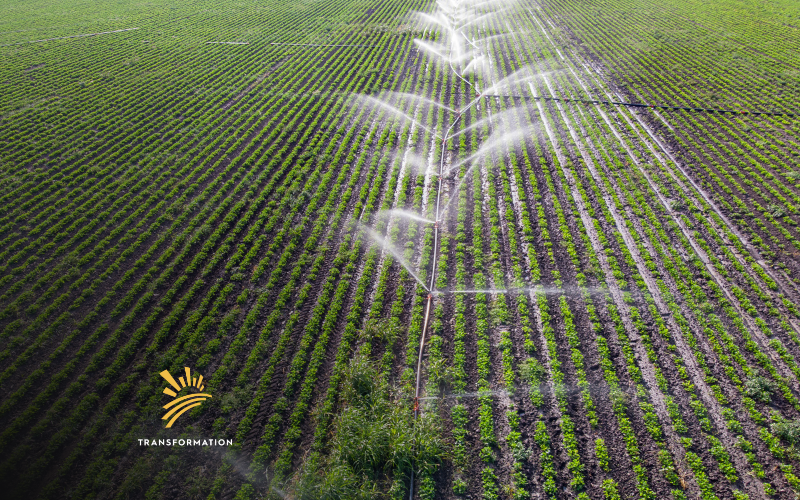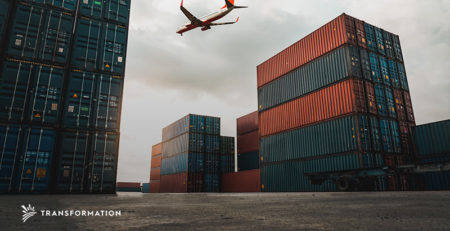Water Technology: A Guide to Finding Sustainable Solutions
As the world’s population grows, so does the demand for fresh water. However, the supply of fresh water is limited. The dual forces of climate change and population growth are putting unimaginable pressure on our water stocks.
You may wonder how this is possible on a planet that’s comprised of 97% water. How can we possibly have a water crisis with that much water in our world?
The problems are two-fold. First, of the total water on planet Earth, less than 3% is usable fresh water. Only 0.03% of that is accessible on the surface. Polar ice caps, ground ice, and permafrost contain the remaining accessible freshwater supplies.
At the same time, the Earth’s population is growing by leaps and bounds. The demand for safe, fresh water sources is growing with it. In fact, more than 2.1 billion people face water insecurity each year. The amount of water in demand is expected to increase by 50% by 2050.
The Reasons for Water Scarcity and Some Solutions
There are several reasons that fresh, usable water is so scarce. These can be traced back to five major factors that, if not reversed, will continue to affect the world’s water industry.
1. Unsustainable development practices.
Many industrial practices and development projects impact the water supply through groundwater contamination and by reducing the soil’s water storage capacity. This reduces the ability to replenish the groundwater and increases the impact of issues like soil erosion, groundwater contamination, and evaporation.
In fact, approximately 80% of industrial wastewater generated by mining, manufacturing, and urban development is dumped back into the water supply untreated. Diversionary practices like large-scale construction of hydroelectric dams and overuse contribute to the problem.
2. Unsustainable agricultural practices.
The single biggest consumer of our water is agriculture. By 2050, the demand from this industry is expected to increase 19%. Today, the agricultural industry is already suffering from extreme water stress. That stress is expected to increase to 40% of all global agriculture within the next 16 years.
Unsustainable agricultural practices are part of the challenge. Inefficient irrigation methods, where nearly half of all irrigation water doesn’t reach the intended crops, are one example.
In addition, water runoff is polluting water sources and harming marine life. This runoff from agriculture usually contains large amounts of nitrogen and phosphorus which is commonly known to be used in fertilizer.
3. Government inaction.
There are many government policies that look like they’re focused on sustainability on the cover. However, many either ignore or merely pay lip service to these issues. This creates a disconnect between the available water supply and increasing demand.
Insufficient coordination between governments and organizations, coupled with limited awareness among affected populations and a low priority given to water depletion, results in a failure to effectively address these problems at any level.
4. Corruption and greed.
Possibly worse than inaction is the level of greed and corruption at all levels. This includes everything from buck-passing and blame deflection to outright bribery. It also includes handing out contracts to corporations involved in activities that contribute to the problem rather than more sustainably-minded corporations. A great example of this was Brazil’s “Operation Car Wash scandal of 2014.
5. Environmental degradation and climate change.
All other roads lead to the cumulative effects of environmental degradation, climate change, and our increasingly diminished water supply. All of our natural cycles are connected and dependent on each other. This means a change in one cycle has an effect on all other cycles.
Degraded landscapes impact plant growth and density, which impacts rainfall. This leads to increasingly volatile weather systems that impact the severity and spread of droughts and flooding. In turn, areas of drought are affected by increasing temperatures that accelerate evaporation. This creates a greater presence of water and energy in the upper atmosphere. These factors not only increase violent weather patterns but also threaten our ability to access clean, safe water.
Although these trends mainly affect developing countries, the first world is not immune. In fact, we are culpable for much of the disasters facing us. That means that the problems are ours to share, and it’s up to those of us who can solve them.
Technology may be contributing to the problem as bigger data centers and applications consume more resources than ever before. However, sustainable technologies are being developed that are poised to provide effective solutions when properly and fully funded and implemented.
How Investment in Sustainable Water Technologies Will Help
Investing in sustainable water technology presents an opportunity to address these challenges while also generating strong returns for investors. Advances in sustainable water technology are making it possible to invest in a rapidly expanding industry and help the environment simultaneously.
In other words, this presents the chance to get in on the ground floor of a growing industry. An industry that’s born of necessity and spurred by innovation - in other words, intelligent water systems, smart water management, and precise surface irrigation.
Smart Water Management and Efficient Irrigation Technologies
Organizations like the World Sustainability Foundation are driving innovation in agriculture and creating new opportunities for investment. The future is exciting, with new tech developments emerging almost daily to alleviate sustainability issues. Some of these innovations trending over the next few years include:
Smart Water Management Platforms:
These are aimed at commercial and industrial end users with an eye toward minimizing waste and monitoring water usage and wastewater treatment. This includes technologies used to anticipate usage, reduce systematic downtime, streamline maintenance requirements, and minimize expenses.
Investment opportunities include software and systems development.
The Circular Economy of Reusing Wastewater
This solution seeks to transition from a linear water lifecycle of investment, acquisition, usage, and disposal to a more circular route. This cycle involves extracting usable resources like energy, nitrogen, and phosphorous for reuse and conservation.
Investment opportunities include R&D related to bioaugmentation, hybrid technologies, and nanoparticle treatment.
IoT-Based Precision Irrigation Systems
The use of IoT -based technologies to develop more efficient agricultural irrigation systems will help to increase crop yields while reducing water usage and supporting sustainability. Investment opportunities include infrastructure, platform, and software development.
5G and AI-based Solutions
Researchers are exploring how to use AI-based technologies, like Natural Language Processing (NLP) or Machine Learning (ML), to gather and analyze data, provide oversight, and streamline water resource management. Technologies like 5G are able to reduce lag and gather data in real-time for more efficient water management.
Investing in these and other emerging water technologies is essential to address issues of water insecurity.
Final Thoughts
Many of the problems facing us are man-made. Although climate naturally fluctuates over time, our actions are accelerating the deterioration of the resources needed to sustain life.
In addition to all parties involved doing their part to preserve our natural resources, tech solutions will be necessary to mitigate the damage.
To learn more about sustainability and the benefits of investing in water technology, get in touch with us to review your options today.



Leave a Reply